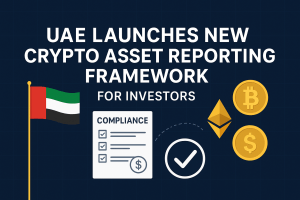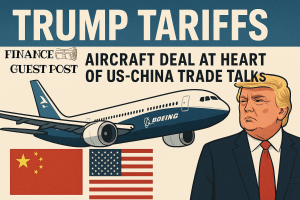On June 18 2019, Facebook announced its plan to launch its new cryptocurrency, Libra. The move is supported by various prominent names such as Visa, PayPal, eBay, Spotify, and Uber. Binance, a leading crypto trading platform, announced the launch of a unified stablecoin market in November 2018. The USDT Market (USDT) market was renamed to USDⓈ, to serve as a combined stablecoin market. Many experts opine that these moves will help make stablecoins a part of everyday transactions in not too distant a future.
Like various other stablecoins or altcoins, Libra is to be backed by real-world assets. What essentially differentiates a stablecoin from a conventional cryptocurrency such as bitcoin is that the former comes without the extreme volatility that the latter might face. This is why most businesses remain wary about accepting cryptocurrencies. However, a change may well be coming. According to a recent report, close to 60 stablecoins are out there or in the process of development. In addition, the New York State Department of Financial Services has approved and regulated two USD-backed stablecoins – the Gemini Dollar (GUSD) and the Paxos Standard (PAX).
While these advancements indicate that stablecoins are making their presence felt, do they require your attention?
How Do Stablecoins Work?
What’s common between all stablecoins is that they come with fixed values. Ones that are pegged to real-world assets such as fiat currencies and precious metals adhere to a centralized model. Decentralized stablecoins, on the other hand, can be backed by cryptocurrencies, rely on algorithms, or even be tethered. The four main categories stablecoins fall under include:
- Fiat- collateralized
- Commodity- collateralized
- Crypto- collateralized
- Non- collateralized
Fiat- Collateralized
A fiat-collateralized stablecoin is backed by a fiat currency at a 1:1 ratio. What this basically means is that for each stablecoin out there, a fiat currency is held in a bank account to serve as collateral. Some of the popular fiat-collateralized stablecoins include Tether (USDT), TrueUSD (TUSD), USD Coin (USDC), Gemini Dollar (GUSD), and LBXPe.
If you wish to redeem your stablecoins for a fiat currency, the issuer of the stablecoin takes the amount from its fiat currency reserve and transfers it to your bank account. The stablecoins you exchange are either taken out of circulation or destroyed. Since this is the easiest structure that stablecoins follow, it can make way for widespread adoption. If the currency that a stablecoin is pegged to remains stable, the same holds true for the value of the stablecoin as well.
Commodity- Collateralized
This type of stablecoin is backed by different interchangeable assets. While gold is the most commonly used commodity that serves as collateral, some stablecoins are backed by assets such as other precious metals, oil, and even real estate. If you own commodity- collateralized stablecoins, you essentially hold a real-world asset with a tangible value. However, volatility comes in the form of increase or decrease in value of the assets that back such stablecoins.
Until not long ago, only the really rich could think about investing in assets such as gold, oil, or international real estate. Commodity-backed stablecoins give just about anyone the ability to make such investments.
Look at Digix Gold (DGX) as an example. This ERC-20 token, built on the Ethereum network, is backed by gold that is stored in Singapore and is audited every three months. The value of 1 DGX is equal to the value of 1 gram of gold. If you don’t mind traveling to Singapore, you may redeem your DGX for actual gold.
Tiberius Coin (TCX) is a stablecoin that is backed by as many as seven precious metals that commonly find use in technological hardware. SwissRealCoin (SRC) is backed by a Swiss real estate portfolio, and it gives token holders the ability to vote on investment choices.
Crypto-Collateralized
Backed by other cryptocurrencies, this type of stablecoin relies solely on the blockchain, which makes it more decentralized that fiat or commodity-backed alternatives. It is common for these stablecoins to be over-collateralized, as this allows better absorption of price fluctuations. If the price of the cryptocurrency to which a stablecoin is pegged drops below a predetermined level, the stablecoin is liquidated automatically.
It is not uncommon for crypto-collateralized stablecoins to be backed by multiple cryptocurrencies to minimize risk. They offer increased liquidity, giving you the ability to quickly convert your investment into the underlying asset.
Dai, created by MakerDAO, is a popular crypto-collateralized stablecoin. While its face-value is pegged to the USD, it relies on the Ethereum blockchain through the use of smart contracts. A smart contract is a self-executing contract that exists on the blockchain network and requires no external authority to endorse or validate it.
Non-Collateralized
While stablecoins are typically backed by real-world assets, this is not the case with non-collateralized stablecoins. These coins rely on algorithmically governed approaches to control their supply. When there is an increase in demand, the price is brought down to the normal level by creating new coins. If the value drops noticeably, the issuer purchases coins from the market to reduce the supply in circulation. Theoretically, the value of such stablecoins would experience relative stability because supply and demand remains their driving force.
These stablecoins are the most decentralized of the lot, given that they do not use any other asset as collateral. As a result, even if the value of a fiat currency or a real-world asset experiences a negative trend and affects the prices of other types of stablecoins, the value of these stablecoins will remain largely stable. Basis is an example of a non-collateralized stablecoin. It makes use of an algorithm to adjust supply automatically.
Benefits of Stablecoins
The biggest advantage that stablecoins present is relative stability when compared to the largely volatile cryptocurrency market. If you have invested in traditional cryptocurrencies and think that the market is experiencing a downward trend, you may move your investments to stablecoins and wait for the storm to pass.
Businesses have, until now, been largely skeptical about using cryptocurrencies as a valid means of payments. While several leading names across realms such as Microsoft, KFC, Expedia, Shopify, and Overstock accept crypto payments, there is no widespread use of traditional cryptocurrencies yet. This is where stablecoins make for better alternatives. While they offer the same benefits as cryptocurrencies, they also offer the stability and guarantees of trust associated with fiat currencies.
People who trade in cryptocurrencies using trading platforms that do not support payments made via fiat currencies may benefit by turning to stablecoins. Consider this – you have a cryptocurrency investment that you wish to sell, but can exchange it only for another cryptocurrency. This still exposes you to the volatility factor, which is not the case if you exchange your cryptocurrency for stablecoins.
Another aspect that works in the favor of stablecoins is that they use smart contracts that are enforceable over time. Given that these smart contracts remain transparent, traceable, and irreversible, their use is ideal when it comes to making payments toward loans, rent, salaries, and subscriptions.
For example, all an employer needs to do is use a smart contract that automatically transfers stablecoins to an employee’s account at the end of every month. Businesses that have employees in different countries can benefit by going this way because it would reduce not just the costs associated with overseas money transfers, but also turnaround times.
As a tenant, you can set up a smart contract with your landlord. The transferring of stablecoins would take place on the 1st of every month. The same principle would apply when it comes to making mortgage payments or payments toward your regular subscriptions.
According to Gav Smythe, founder of iCompareFX, “stablecoins hold the potential to change the way people make international money transfers”. Given the number of people who work as expats or live as immigrants in countries outside of their own, it is only normal for them to want to send money back to their home countries. Until now, most people turn to their banks or prominent names such as Western Union and MoneyGram. In the process, they often have to deal with less than favourable exchange rates, high fees, and typically long turnaround times.
With stablecoins, cross-border transfers can take place in near real-time, and for a fraction of the cost typically associated with a bank or a traditional overseas money transfer company. Besides, unlike transferring a traditional cryptocurrency, you don’t have to worry about fluctuations in price from when you send the funds to when the recipient receives them.
People who live in unbanked or under-banked regions can also benefit by turning to stablecoins. Given that mobile phone usage is wide-ranging, the use of digital wallets to trade in and make payments through stablecoins can effectively address the problem of no access to traditional forms of banking.
Are There Drawbacks?
When it comes to centralized stablecoins, holders are offered assurance by the issuer that the stablecoins are collateralized using real-world assets, which may range from fiat currencies to precious metals. Take the case of Tether as an example. There was a fair amount of controversy surrounding whether or not it held adequate USD reserves. It was only in late 2019 that rumours were laid to rest when Bloomberg revealed bank statements indicating that $2.2 billion existed in Tether’s bank account around at a time when the same number of Tether was in circulation.
While companies that offer stablecoins operate using the same premise, there is no way for a regular investor to find out is all the information provided is factual. This requires choosing stablecoins that have passed the reliability test, unless you are okay with losing all or part of your investment.
Stability in value is at the forefront of stablecoins, but this is not always the case. Even with stablecoins that are pegged to real-world assets, fluctuations may take place. For instance, in the event of a financial crisis where major fiat currencies drop in value, stablecoins pegged to such currencies would also drop in value. Volatility might be a particular concern when it comes to stablecoins that are pegged to other cryptocurrencies. Some stablecoins are pegged to complicated bond schemes, where liquidity depends largely on future growth.
Companies that offer stablecoins continue to work on increasing investors’ trust by getting approval from relevant government bodies. However, the flipside is that they are required to follow government rules and regulations. For example, if you wish to purchase Circle’s USD Coin (USDC) or the Gemini Dollar (GUSD), you will need to provide proof of identity. In addition, these companies may decline their offerings to people who have previous money laundering convictions.
What Are the Popular Stablecoins?
If you plan to invest in stablecoins, consider looking for ones that are listed on at least one major cryptocurrency exchange such as Bitfinex, Ethfinex, Bancor, DDEX, and HitBTC. Some of the popular alternatives include:
- Tether. The controversy surrounding Tether (USDT) notwithstanding, it continues to be the most commonly used stablecoin the world over. This stablecoin has a 1:1 peg against the U.S. dollar. You may trade in USDT through most crypto exchanges, using most altcoins.
- TrueUSD. TrueUSD (TUSD) is pegged to the U.S. dollar at 1:1. The company follows complete transparency, making its attestations public, and anyone can access it reports. It is available for trading through most popular exchanges.
- MakerDAO. While the token (DAI) provided by MakerDao is linked to the U.S. dollar, it is not backed by this fiat currency. Instead, it relies on an algorithm that moves a target price to achieve stability, which, in turn, incentivizes people to trade. This stablecoin is available through most popular exchanges.
- Digix Gold Tokens. Digix Gold tokens (DGX) are collateralized using gold. The value of one DGX has hovered around the U.S. $40 mark since its inception. Some of the more popular crypto exchanges give you the ability to trade in DGX.
Conclusion
Stablecoins have the potential to change the way different industries operate, and they also make for fairly stable investment alternatives. When compared to traditional cryptocurrencies, stablecoins have largely done away with the apprehension of sudden drops in value. By offering a decentralized, stable, and secure system, as well as compatibility with other digital assets, it appears that stablecoins are here to stay.








